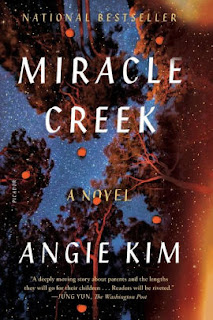Chasing My Cure: A Doctor's Race to Turn Hope into Action
Author: David Fajgenbaum
Publisher: Random House Publishing Group
Date of Publication: September 10, 2019
Pages: 230
Finding a cure for a rare disease about which little is known is challenging to even the most seasoned medical researcher. Imagine if that researcher was an inexperienced medical student who is also suffering the ravages of this obscure disease and you have David Fajgenbaum's Chasing My Cure. This plot line sounds like something out of an implausible, syrupy TV show, but this riveting story is true.
Chasing My Cure begins with David's early life in Raleigh, North Carolina. His father was a successful orthopedic surgeon and team doctor for the North Carolina State Wolfpack. David was an excellent athlete and was a high school football star. He went on to play quarterback at my alma mater, Georgetown University. David's interest in medicine began with an unfortunate turn of events involving his mother. Unfortunately she was diagnosed with a glioblastoma during his freshman year of college and died fairly quickly. We get an early glimpse of this young man's organizational skills as he forms a support group for grieving college students, first at Georgetown but soon at many campuses nationwide. David decided to pursue oncology to try to help patients like his mother.
While attending medical school at the University of Pennsylvania he begins experiencing severe fatigue which he blames on his rigorous schedule. He becomes severely ill, is admitted to the hospital and proceeds to plummet downhill from a process no one can diagnose. He is thought to have an autoimmune disease and is treated as such but continues a downward course of multiple organ system failure. He is even given his last rights, a sacrament for Catholics who are felt to be close to death. He finally responds favorably to therapies and a diagnosis of Castleman Disease is made. This is a rare disorder where a patient's lymphatic system overproduces interleukin-6 causing an intense systemic inflammatory response.
The remainder of the book chronicles David's quest to find out all he can about this disease and improve treatment. In between four near-fatal relapses he is able to complete medical school. He then studies for an M.B.A. at the Wharton School of Business in order to better organize an international collaborative effort to study and defeat Castleman Disease. He is aided by a very supportive family and group of colleagues. He falls back on his experience in sports to foster teamwork and achieve goals. This is a fascinating study of one individual's tenacity, will to live, and capacity to enlist a myriad of different doctors, medical researchers, and even patients to get a handle on this disease. At one point he writes:
"Fear disintegrates, Doubt disorganizes. Hope clears the way."
That reminded me of the little poem by Emily Dickinson:
This book is a tribute to one man's grit and determination. It is also a tribute to hope, that most fragile of human emotions which is often so easily dashed. This man has remained in remission for a number of years now, utilizing a therapy that he was able to help create. He is an assistant professor of Medicine in Translational Medicine and Human Genetics at the University of Pennsylvania, Associate Director, Patient Impact of the Penn Orphan Disease Center, Founding Director of the Center for Cytokine Storm Treatment and Laboratory, and Co-Founder and Executive Director of the Castleman Disease Collaborative Network (CDCN). In December of 2020 Dr. Fajgenbaum published a paper in the New England Journal of Medicine about cytokine storm in covid-19 patients. His efforts at collaboration have paid off handsomely. This is truly an inspiring story,.


